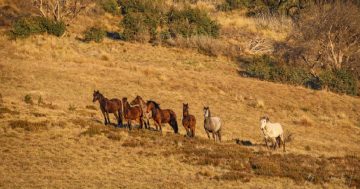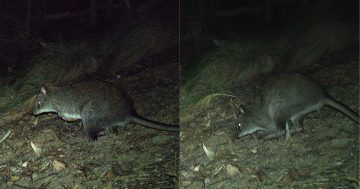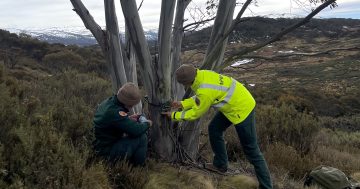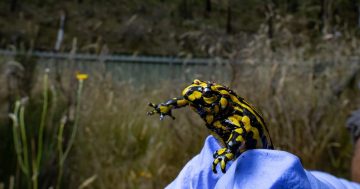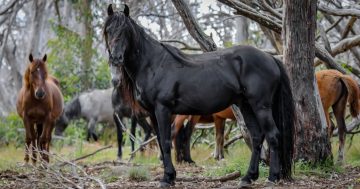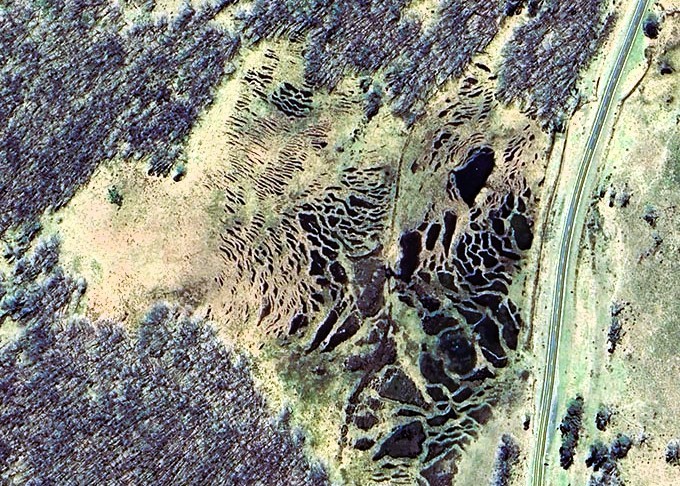
The contour terrace formations in Kosciuszko National Park occur only in some extremely remote locations in the Southern Hemisphere. Image: Google Earth.
Formations resembling a series of rice paddies on a slope that’s far from tropical has scientists poring over the high plains of the northern part of Kosciuszko National Park.
What’s raised their interest is an extremely rare geographic phenomenon called contour terrace formations (CTFs) which – apart from being at Kosciuszko and the high plains and plateaux in Victoria and Tasmania – occurs only in some extremely remote locations in the Southern Hemisphere.
This includes Macquarie and Heard islands – a volcanic group of mostly barren Antarctic islands, about two-thirds of the way from Madagascar to Antarctica – and the very southern tip of Tierra del Fuego – an archipelago shared by Chile and Argentina, off the southernmost tip of the South American mainland.
Contour terrace formations are a repeating pattern of shallow ponds separated by low, narrow levees, but how they form and why they matter is what scientists from the NSW Department of Climate Change, Energy, the Environment and Water (DCCEEW) Soil and Landscape Assessment Team are trying to understand.
NSW DCCEEW’s senior scientist Mitch Tulau says the discovery in Kosciuszko is significant.
“We have been aware of these formations for years but not understood what they were until we started looking at aerial imagery,” he said.
Their study forms part of a broader five-year program to map the soils and landscapes of the park in detail for the first time and make determinations about how best to protect them.
Findings so far have established the contour terrace formations are not ancient relics of a colder climate, rather they’re a result of modern processes and, for the scientists, an important indicator of landscape stability and climate change.
“There are some impressive examples in Tierra del Fuego, which is the very southern tip of South America, the Victorian high country and shallower versions in Tasmania,” Mr Tulau said.
“Our research has found that CTFs only occur where there is the right combination of slope, soil moisture, groundwater, elevation and importantly, plant species.”
Working in much the same way as manmade permaculture terraces characteristic of the Mediterranean, Middle East and South East Asia, the high plains contour terraces help to slow and retain water, at the same time building highly organic soil and important habitat for a range of semi-aquatic plant and animal species.
Mosses and cushion plants, such as the Snow Coprosma (Coprosma nivalis), make up the ‘bolster’ heath plant community which survive and thrive by extending upwards and outwards, searching for the right amount of moisture.
As they do this, they form levees made of their own organic material. These levees create the right conditions for the plant communities to keep growing.
When large amounts of water flow through the system, the levee walls overflow and cause the system further down the hill to reset.
This produces the connected downslope curved pattern visible on aerial photos.
As the plants can die if there is too much water in poorly drained ponds, according to the scientists, they’re highly susceptible to damage from feral pests in the park.
While mapping is a priority, the team will also be determining the topographic and microclimatic limits of the contour terrace formations and gathering soil and vegetation data to identify the key contour terrace-forming plant species.
“CTFs are a specialised ecosystem and a good indicator of a healthy landscape. If things start to change, we can see it play out in the CTFs – acting as an early warning system,” Mr Tulau said.
Documenting this information will ensure these unique landscapes are protected and managed sustainably in Kosciuszko National Park into the future, he added.
Original Article published by Edwina Mason on About Regional.







